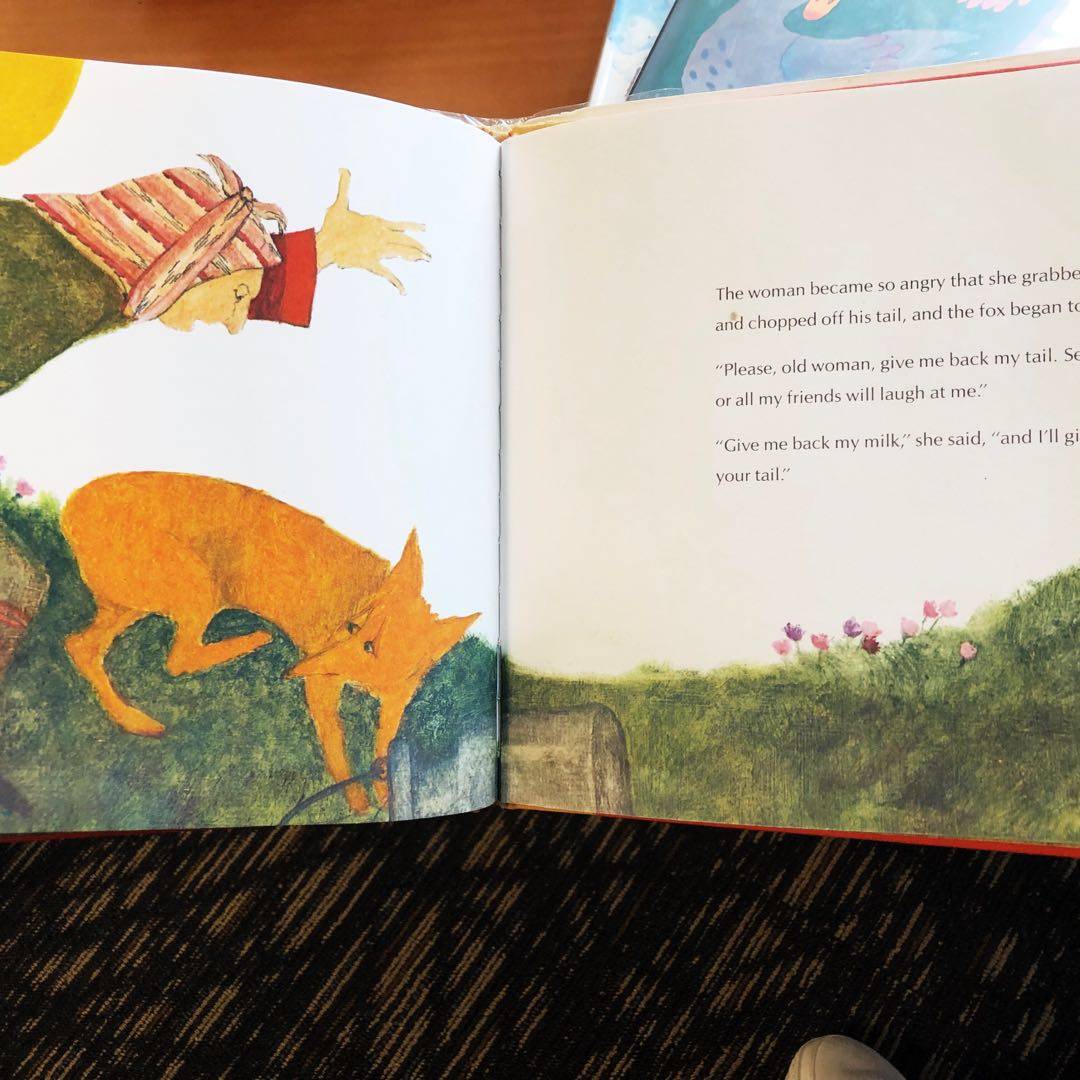“The fox returned to the old women and gave her the milk.“
Good book to inspire kids to accomplish their goals. I would use at any grade.
Good book to inspire kids to accomplish their goals. I would use at any grade.
Coldecott, 1971. Picture book and fiction. Story about a fox who has resilience and gets what he needs even though it was hard. Colorful illustrations.
This is a good book to show that if you try your hardest you can accomplish your goals. The fox wanted his tail back, so he did everything he could to get it.
The book started out way differently than I expected it to. Although I was happy to see it had a good ending. I liked this book because it showed that the fox had resilience and was able to get what he needed even if it was hard.

Review- One Fine Day by Nonny Hogrogian, 1971. This book captured the saying “Your actions have consequences,“ or “Always right your wrongs.“ The fox chose to steal, his consequence was his tail, and had to right to appease everyone.
Blurb-This book is great for the beginning of the school year to talk about kindness to others, and know the consequences of your actions.
Quote-“Give me back my milk,“ she said, “and I will give you back your tail.“

This TL. This book is great for S. This book won a Caldecott Medal. This book tells a story about a Fox going on adventure to get his tail back. https://www.edutopia.org/blog/storytelling-in-the-classroom-matters-matthew-frid... The article covers the importance of using storytelling in a classroom.
I really liked this book(pub.1971). At first, I was not sure if I wanted to continue reading because of the not so happy beginning. After the beginning, I enjoyed and saw were the book was going. I think it is a great read.
Aside from the story itself, I enjoyed the type of illustrations throughout the book. I liked how intricate they were, but also the cohesion of the colors.
“The fox returned to the old woman and gave her the milk.“

In this TL Caldecott winning picture book a woman catches a fox drinking her glass of milk and cuts off his tail. The fox begs her for his tail back, and she agrees to return it if the fox replaces the milk he stole. The fox approaches a series of other animals and people, each of whom wants something in return for their help. After fulfilling everybody's needs, the woman sews the fox's tail back onto him.
Caldecott award winner. This is a perfect simple book for any classroom and it‘s easy to read and follow along. It‘s silly and fun and a journey for the kids to go on
One Fine Day by Nonny Hogrogian, 1971. This is a wonderful classic type tale that has a repeating additive structure. It flows well and makes you feel like you are going on the journey with the fox and then tumbling back when the journey is done. The illustrations, which I think are acrylic on paper, add the the feel and journey of the story and make it a truly wonderful read.
“The fox was getting desperate, and when he found the miller he began to cry.”

I love the details of plants and grass in this story. The illustrations aren‘t too harsh and create a whimsical feeling.
This story tells a tale of a fox losing his tail from an old farm woman. He does everything he can on this journey to get it back. The plot of this story is intriguing and the reader will easily root for the fox on his adventure.
“The fox returned to the old woman and gave her the milk. Then she carefully sewed his tail in place.” A happy ending and a lesson learned!
This is a delightful telling of a greedy fox‘s adventure told in catchy nursery rhyme. It was inspired by an Armenian folktale. It is a perfect read for early childhood classrooms. It was written in 1971 and published by Macmillan Publishing

This quote is a nice way to end the book and is probably the last time the fox will ever venture over to the other side of the forest..

I feel like this part is so odd for a children‘s book. I can‘t really see how this is something a children‘s author would deem entertaining for a child. (When she cuts off the fox‘s tail). Maybe it‘s to emphasize that you should not steal. However, it‘s a little intense for a young audience.
Published in 1971 and awarded the Caldecott in 1972, this story has a moral in which you shouldn‘t take from others unless you want to face the consequences. The use of repetition helps the reader follow along and get engaged in the story by predicting what will be said next. It is a simple story that captivates the reader, but is also kind of odd.